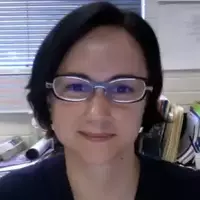Development of Workforce Skills in Geoscience Courses for Majors
Poster Session Part of
Wednesday
Authors
 Karen Viskupic, Boise State University
Karen Viskupic, Boise State University
 Anne Egger, Central Washington University
Anne Egger, Central Washington University
 Rory McFadden, Carleton College
Rory McFadden, Carleton College
We used responses from the 2016 administration of the National Survey of Geoscience Faculty (NSGF) to investigate the extent to which courses in geoscience majors help students develop workforce skills. Respondents (n=1037) answered several questions about activities in the lecture portion of a course they taught for majors; responses were binned by course type based on course names given in an open response question. The most common required and elective courses were compiled from Degree Program Profiles on NAGT's Building Strong Geoscience Departments website, and were categorized into the same bins. Desired workforce skills were identified by the Future of Undergraduate Geoscience Education survey and geoscience employers workshop; we aligned these skills with NGSF questions. For example, responses to a survey question about how often students formally present project results in a talk or poster align with a desired workforce skill in oral communication.
Responses to each skill-related survey question were analyzed by course bin to explore where in an undergraduate program students develop workforce skills. Across the most commonly offered majors-level geoscience courses, activities to help students develop the following skills are frequently used: geologic reasoning and synthesis, working as part of a team, quantitative skills (algebra), temporal thinking, applying skills in new scenarios, evaluation of literature, spatial thinking, and written communication. In contrast, activities to help students develop an understanding of societal relevance, systems thinking, quantitative skills (calculus), evaluation of data quality, and oral communication are not frequently used.
Our results provide a snapshot of the state of workforce skill development across undergraduate degree programs. They may be used by individual programs as a tool for reflecting on where workforce skills are developed and for identifying opportunities for incorporating skills that may be missing from a program.
Responses to each skill-related survey question were analyzed by course bin to explore where in an undergraduate program students develop workforce skills. Across the most commonly offered majors-level geoscience courses, activities to help students develop the following skills are frequently used: geologic reasoning and synthesis, working as part of a team, quantitative skills (algebra), temporal thinking, applying skills in new scenarios, evaluation of literature, spatial thinking, and written communication. In contrast, activities to help students develop an understanding of societal relevance, systems thinking, quantitative skills (calculus), evaluation of data quality, and oral communication are not frequently used.
Our results provide a snapshot of the state of workforce skill development across undergraduate degree programs. They may be used by individual programs as a tool for reflecting on where workforce skills are developed and for identifying opportunities for incorporating skills that may be missing from a program.
